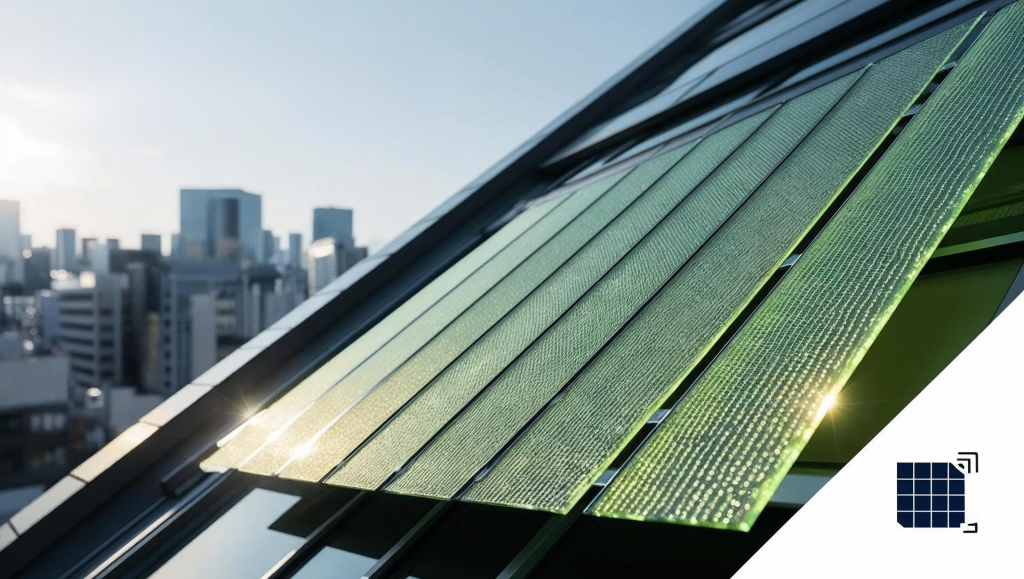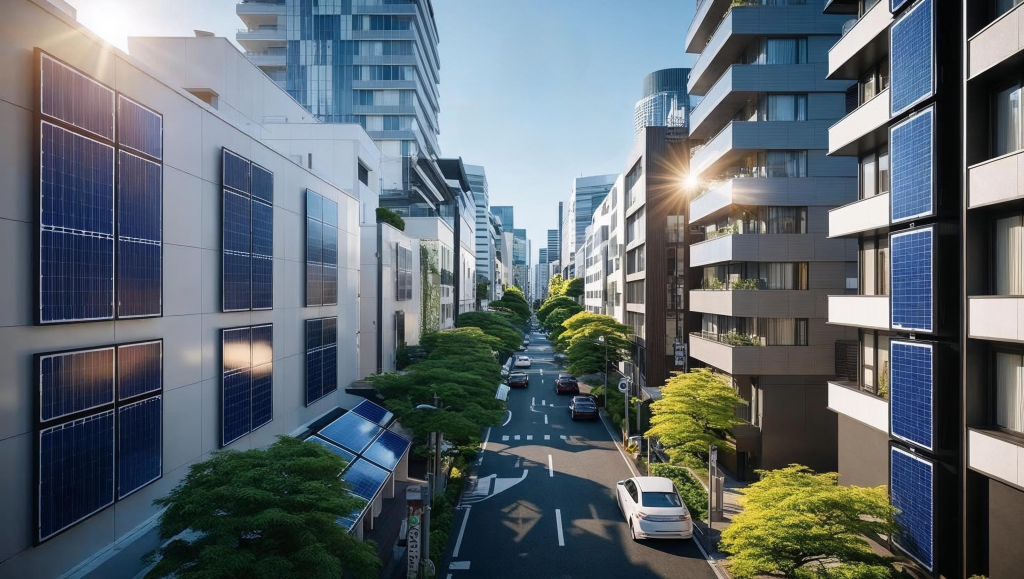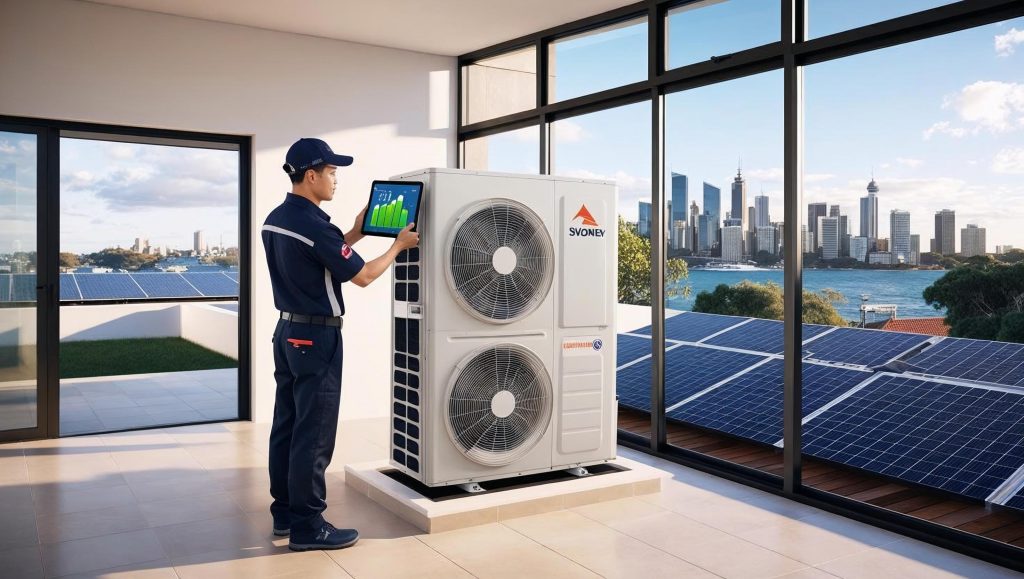Japan has just dropped a bombshell in the renewable energy world, unveiling the world’s first solar super-panel powered by perovskite solar cells (PSCs). This groundbreaking technology could generate 20 gigawatts of electricity—equivalent to the output of 20 nuclear reactors—by 2040. Lightweight, flexible, and perfect for urban spaces, these panels are set to revolutionise how we power our homes and cities. As Australia pushes for greener living, this innovation could inspire sustainable solutions closer to home. Let’s explore what makes Japan’s super-panel a big deal and how it ties to Aussie home energy trends.
Why Japan’s Solar Super-Panel is a Global Milestone
The solar super-panel, developed with PSC technology, is a leap forward in renewable energy. Unlike traditional silicon panels, PSCs are thin, bendable, and highly efficient, making them ideal for space-constrained cities. Japan’s Ministry of Industry aims to produce 20 gigawatts by 2040, enough to power millions of homes. Here’s why this matters:
- Super Efficiency: PSCs have a theoretical efficiency limit of 43%, compared to 29% for silicon panels, capturing more sunlight even on cloudy days. Source
- Flexible Design: They can be installed on building walls, car roofs, or even windows, solving urban land shortages.
- Eco-Friendly: Supports Japan’s net-zero emissions goal by 2050, cutting reliance on fossil fuels.
- Economic Edge: Japan, the world’s second-largest iodine producer, can build a self-sufficient PSC supply chain. Source
The High-Speed Rail Authority notes that sustainable infrastructure, like Japan’s rail and solar projects, is key to urban growth, a trend Australia is also embracing.

How the Super-Panel Works
Perovskite solar cells are the heart of Japan’s super-panel, using a crystalline material that absorbs sunlight more efficiently than silicon. Their lightweight, flexible nature allows creative applications. Key features include:
Urban Integration
PSCs can be embedded in building facades, streetlights, or vehicle surfaces, turning cities into power hubs. Source
High Output
By 2040, Japan plans to generate 20 gigawatts, matching the output of 20 nuclear reactors, a massive step towards energy independence.
Cost Reduction
Government forecasts predict PSC costs dropping to JPY 20 per watt by 2025, making them affordable for widespread use. Source

Why This Matters for Aussie Homebuyers
Japan’s solar super-panel is a wake-up call for Australia, where energy-efficient homes are in high demand. With Sydney’s housing market heating up and electricity costs rising, sustainable solutions like solar power and efficient cooling are key. Elyment Group’s high-efficiency air conditioning installations are perfect for new Aussie homes, complementing solar innovations. Benefits include:
- Lower Bills: Energy-efficient AC units, paired with solar, can cut power costs by up to 40%.
- Green Living: Reduces carbon footprints, aligning with Australia’s net-zero goals.
- Smart Comfort: Wi-Fi-enabled units offer precise cooling, ideal for Sydney’s steamy summers.
Discover Elyment’s eco-friendly AC solutions at elyment.com.au.

How to Bring Energy Efficiency to Your Home
Inspired by Japan’s solar revolution? Here’s how Aussie homebuyers can make their homes more sustainable:
- Install Solar Panels: Explore solar options to power your home and reduce grid reliance.
- Choose High-Efficiency AC: Elyment’s 5-6 star rated units save energy and keep you cool.
- Insulate Well: Proper insulation cuts cooling costs, especially in Sydney’s heat.
- Get Expert Advice: Contact Elyment at elyment.com.au for custom green home solutions.
Follow @ElymentGroup on X for the latest sustainable home tips.
Challenges and Solutions
While Japan’s super-panel is promising, it faces hurdles that Australia can learn from:
- High Costs: PSCs are pricey now, but costs are expected to drop by 2040. Aussie solar rebates can help offset similar expenses.
- Durability Issues: PSCs are moisture-sensitive, but ongoing research aims to improve lifespan. Source
- Scalability: Mass production needs investment, but Japan’s iodine advantage and subsidies pave the way.
Key Takeaways
- Japan’s solar super-panel, powered by perovskite cells, could generate 20 gigawatts by 2040, matching 20 nuclear reactors.
- Lightweight and flexible, PSCs are ideal for urban areas, inspiring sustainable home trends in Australia.
- Elyment’s high-efficiency AC installations complement solar power, cutting costs and emissions.
- Aussie homebuyers can embrace solar, insulation, and efficient cooling for greener living.
Next Steps for Aussie Homebuyers
Japan’s solar super-panel shows what’s possible when innovation meets sustainability. In Australia, you can start building a greener future with energy-efficient homes. Explore solar options, insulate your home, and partner with Elyment for high-efficiency AC installations. Visit elyment.com.au to plan your sustainable home or follow @ElymentGroup on X for eco-friendly ideas.
Ready to go green?
Follow @ElymentGroup on X for sustainable home tips, or visit elyment.com.au to explore high-efficiency AC solutions.
